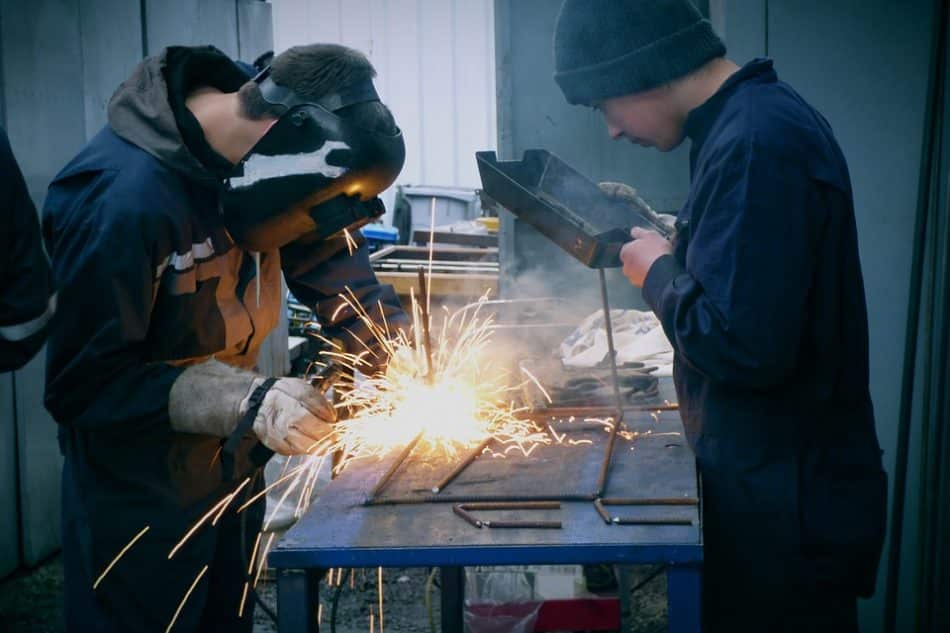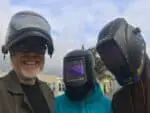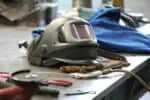Welding masks, better known as welding masks, is required by every welder for safety reasons. The most common type of welding mask is the auto-darkening mask that runs on solar energy.
They will not only shield your eyes and skin from high-velocity sparks, but will also shield you from possibly vision-damaging UV and infrared rays released by the arc.
And since your welding mask plays an important role in keeping you safe, you have to make sure they’re in good working condition so that your safety is not jeopardised.
There are various reasons why your welding mask might have stopped working, and you can run your mask through various tests to identify if they are in proper working conditions.
It’s possible that your mask isn’t working because of:
-
-
- Quality
-
-
-
- Temperature
-
-
-
- Battery
-
In this article, we will look at all the possible reasons why your welding mask could have stopped working or what affects its working efficiency.
And in order to make sure the above-mentioned things are fine for the smooth functioning of your welding mask, you need to consider a few things before you start with your welding work-
1.) Check the code
The standard that your welding mask should meet is ANSI/ISEA Z87.1-2015.
The International Safety Equipment Association established these guidelines to ensure that welding masks are both safe and effective for use.
Before you attempt to weld, be sure your mask meets these standards.
Welding is tough and dangerous, and masks that do not meet the regulation can be extremely dangerous to your health and vision.
You must ensure that your mask fits properly. You don’t want it to be too loose or too tight because this can impair your eyesight and safety.
2.) Security and lens selection
The sort of welding you undertake will frequently decide the lens you will want.
Lenses typically vary from shade 9 for low amperage (electric current strength) applications to shade 13 for high amperage applications. (What Shade Setting to Use on Welding Helmet?)
The type of lens you require will be determined by your welding work.
Because it is intended to respond to increased amperage, an auto-darkening mask or mask avoids the need to change the lens.
For passive masks, you must additionally ensure that the lens is properly positioned.
Incorrect positioning might result in eye injury or damage to the vision.
3.) Eye strain test
The most obvious sign that your welding mask isn’t working is if you get eye fatigue.
Eye tiredness is frequently caused by too much light passing through the lens.
Under their welding mask, many welders also wear protective see-through glasses. This does not obscure visibility, but rather adds an additional layer of protection against dangerous UV radiation.
4.) Right fit
You should make certain that your welding mask fits properly. You don’t want it to be too loose or too tight because this can impair your eyesight and safety.
If it is excessively loose, it may slip, exposing areas of your neck or preventing good vision through the lens.
When working long hours, a mask that is excessively tight may be uncomfortable.
With a snap of your neck, your mask should click into place. If the mask does not drop itself with a neck snap downward, you have either tightened the sides to keep it in place or you have a malfunctioning mask.
5.) Visibility test
Make sure you’re using the right lens for the job.
Too much light may pass through the lens and negatively influence your eye health, whilst a lens that is too strong may negatively affect your welding accuracy due to being too dark.
Determine the type of welding you are conducting before picking the appropriate lens.
6.) Sun test
Because it needs all of your welding mask’s capabilities to perform properly, the sun test is ultimately the best approach to assess the quality of your auto-darkening welding mask.
Simply put your mask on, then go outside and choose a comfy position. Examine how your lenses react when you look at the sun. If your mask is strong and responsive, your lenses should darken.
Then, turn your gaze to the light and slowly move your hands in front of your face. Because your hands are moving slowly, the light should be detected by your auto-darkening welding mask.
As a result, your lenses should darken and stay dark. If they don’t, you should think about repairing or replacing your auto-darkening welding mask.
Since the sun test is considered to be one of the important tests to identify the working condition of a welding mask, here we give you few tips on how you can test it yourself-
1. Make use of a torch striker.
A torch strike, which is used to start an oxy-acetylene torch, is a simple technique to test an auto-darkening welding mask.
Make some sparks using the striker. The sensor in your welding mask should detect sparks immediately and switch to dark mode.
2. Take a look at the sun or strong overhead lighting.
Another thought is to see whether the mask goes into dark mode: Put on your mask and stare directly at the sun or any bright overhead lights.
3. Examine the mask’s batteries.
Remove the batteries from your auto-darkening welding mask if you have one. Examine their metal connections and put them through a battery tester to ensure they operate.
See also: Can I Use a Welding Mask to View a Solar Eclipse?
And with the above mentioned points, you will realise your mask has probably stopped working because of one of these reasons-
1.) Sensor Defect
If the light sensor in your mask is broken or unclean, it will not detect the arc and your mask will not convert to dark mode.
2.) Shade issues
It’s possible that your Auto Darkening Filter has stopped working. In this situation, you’ll need to find a substitute.
3.) Depleted battery
Your auto-darkening welding mask will not function if there is no power source.
Suppose your solar-powered welding mask has not been used for a while. Therefore, it may be essential to leave it outside for 15 minutes to recharge the batteries. Make sure the batteries are fully charged so that it can be used properly.
Conclusion
Regardless of the sort of mask you choose, it must meet certain safety regulations. Before wearing or purchasing a mask, be certain that it complies with safety requirements, and look for all the necessary criteria required for the smooth functioning of your welding mask.








